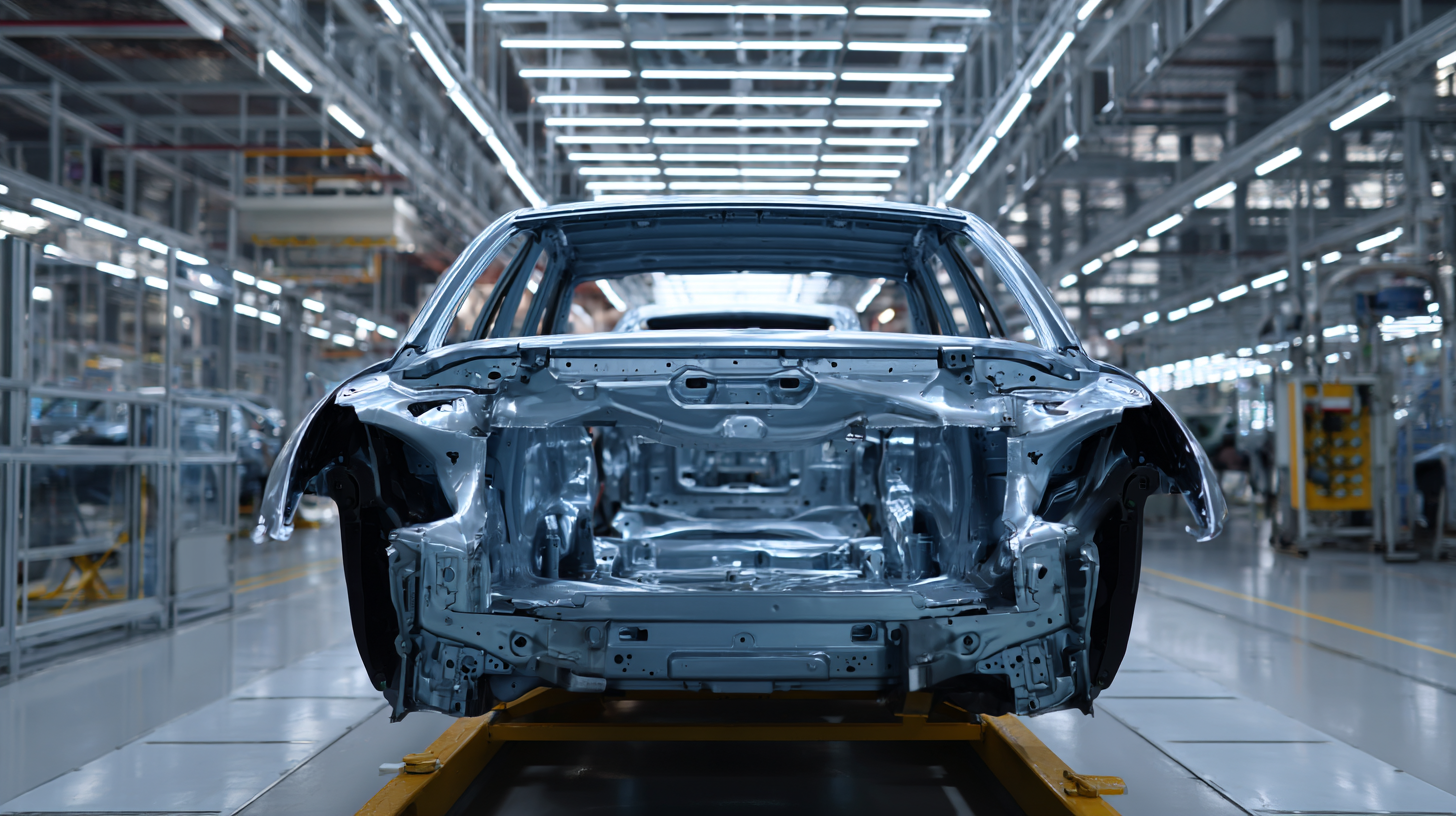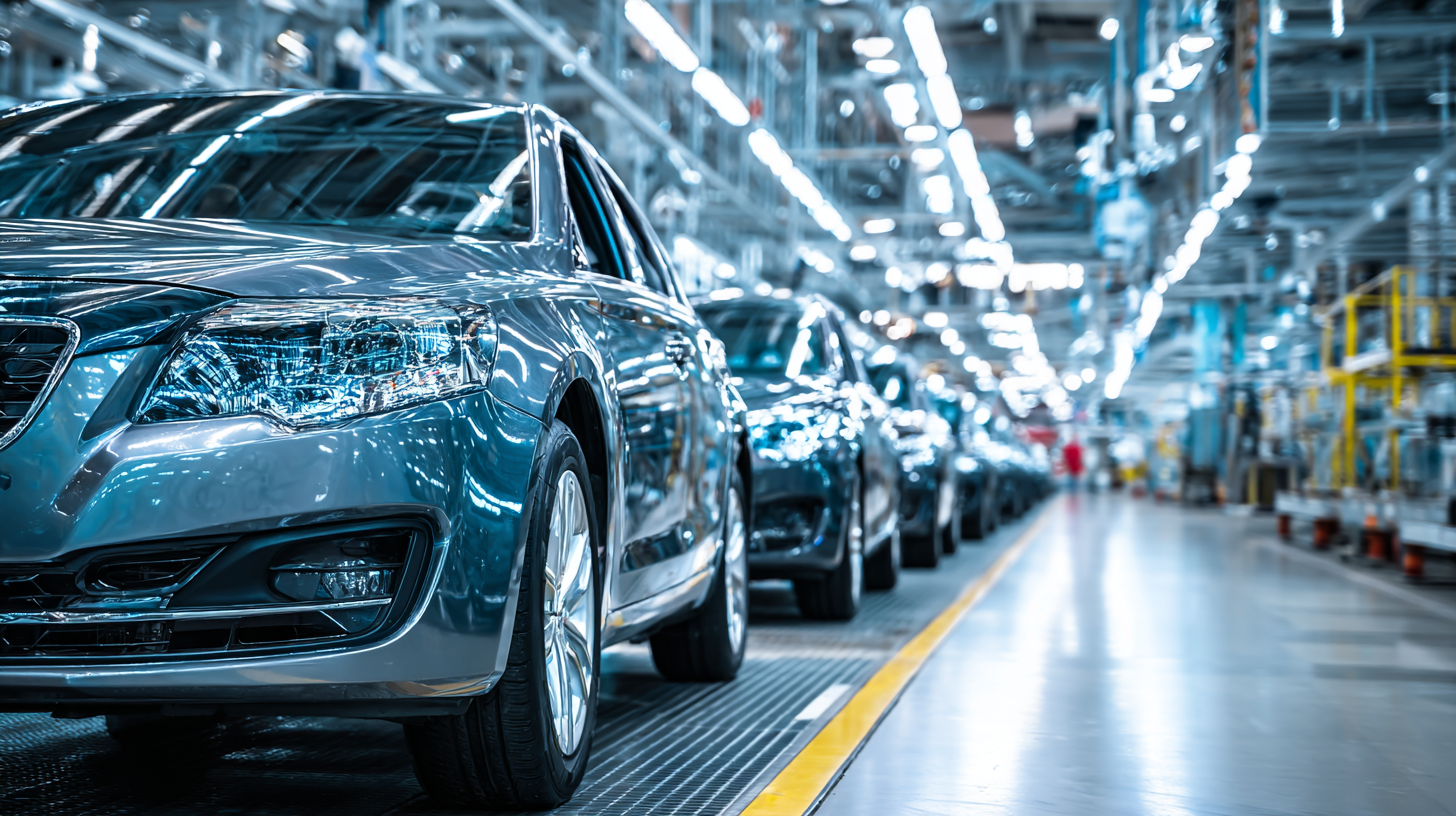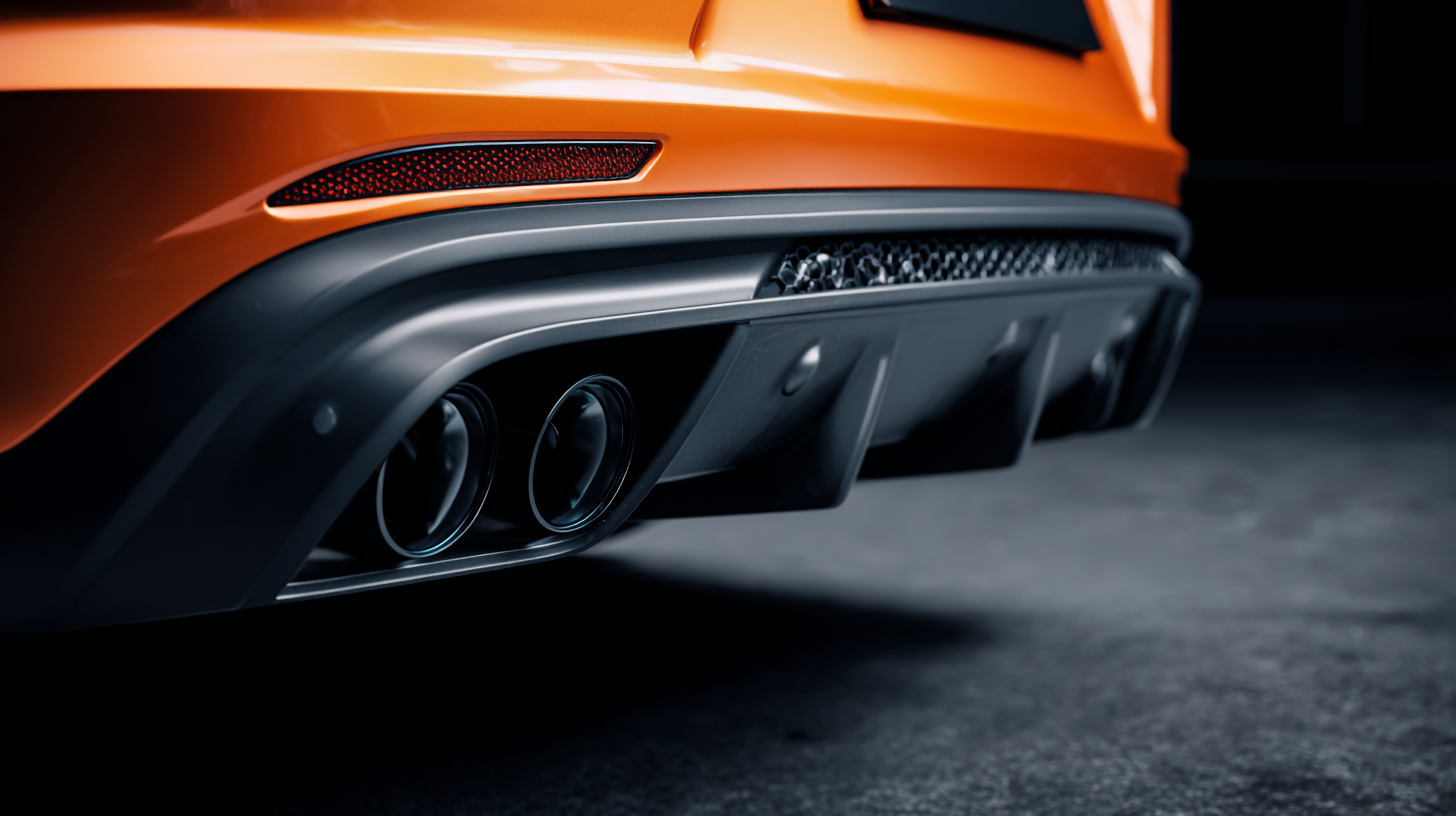
Unleashing the Power of Chinese Manufacturing: The Global Rise of the Best Car Bumper
The automotive industry is undergoing a significant transformation, with Chinese manufacturing at the forefront of this evolution, particularly in the production of car bumpers. According to a recent report by MarketsandMarkets, the global automotive bumper market is projected to reach USD 15.7 billion by 2025, with a compound annual growth rate (CAGR) of 4.7% from 2020 to 2025. This growth is largely driven by the increasing demand for lightweight and high-performance materials, as well as the rapid proliferation of electric vehicles, which require innovative bumper designs for enhanced safety and aesthetics. Chinese manufacturers are leveraging advanced technologies and competitive pricing to dominate this sector, enabling them to produce high-quality car bumpers that meet global standards. As they continue to invest in research and development, the potential for China's car bumper production to lead in the global market is becoming increasingly evident.

Exploring the Evolution of Chinese Car Bumper Manufacturing Techniques
The evolution of Chinese car bumper manufacturing techniques has played a pivotal role in the automotive industry, propelling China to become a global leader in automotive parts production. According to a recent IHS Markit report, China's automotive component market is projected to reach $1.3 trillion by 2025, with bumpers making up a significant portion of that growth. Innovations such as advanced polymer materials and injection molding processes have enhanced both the durability and aesthetic appeal of car bumpers, allowing manufacturers to meet rising consumer demands for safety and design.
Moreover, the integration of automation and smart manufacturing technologies has significantly improved production efficiency. Research by McKinsey & Company indicates that the use of Industry 4.0 technologies in manufacturing can boost productivity by up to 30%. In China, companies have adopted robotic assembly lines and digital twins, resulting in reduced cycle times and improved quality control. This transition not only streamlines the production process but also positions Chinese manufacturers to compete effectively in the global market, further solidifying their reputation for producing high-quality automotive components.
Key Innovations Driving the Quality of Chinese Car Bumpers
The surge in the quality of Chinese car bumpers is primarily driven by innovative manufacturing techniques and advanced materials. Chinese manufacturers are increasingly adopting state-of-the-art technology such as computer-aided design (CAD) and computer-aided manufacturing (CAM) to enhance precision and consistency in production. These technologies allow for the creation of intricate designs that not only improve the aesthetic appeal but also boost the structural integrity of the bumpers. Furthermore, the integration of automation and robotics in factories has resulted in faster production times while reducing human error, ultimately leading to higher quality products.
In addition to technological advancements, the use of superior materials plays a crucial role in elevating the performance of car bumpers. Manufacturers are now focusing on lightweight yet durable materials, such as thermoplastics and composites, which provide better impact resistance and energy absorption. This shift not only improves vehicle safety but also contributes to reduced fuel consumption by lowering the overall weight of the vehicles. As a result, the combination of innovative manufacturing processes and high-quality materials positions Chinese car bumpers at the forefront of the global automotive industry, showcasing a remarkable transformation in both quality and competitiveness.
Unleashing the Power of Chinese Manufacturing: Innovations in Car Bumper Quality
This chart illustrates the advancements in the quality of Chinese car bumpers over the years. The data points reflect the percentage improvements in durability, impact resistance, and weight reduction, showcasing the innovations that have driven these enhancements.
The Impact of Globalization on Chinese Car Bumper Exports
In recent years, the globalization of markets has significantly impacted the production and export of car bumpers in China. As international trade barriers continue to lower and demand for automotive components rises, Chinese manufacturers have positioned themselves as key players in the global automotive supply chain. This shift is not merely about increasing production capacity; it involves adopting advanced technologies and innovative manufacturing practices, allowing China to produce high-quality car bumpers that meet international standards.
 Moreover, the competitive pricing of Chinese car bumpers gives them a significant advantage in global markets. Manufacturers leverage economies of scale and efficient supply chain management to keep costs low, attracting customers from all over the world. The rise of e-commerce platforms also facilitates the accessibility of these products to global buyers, enabling even small auto manufacturers to source essential components from China. This trend not only strengthens China's position in the automotive industry but also reflects the broader influence of globalization on manufacturing dynamics, transforming local capabilities into global opportunities.
Moreover, the competitive pricing of Chinese car bumpers gives them a significant advantage in global markets. Manufacturers leverage economies of scale and efficient supply chain management to keep costs low, attracting customers from all over the world. The rise of e-commerce platforms also facilitates the accessibility of these products to global buyers, enabling even small auto manufacturers to source essential components from China. This trend not only strengthens China's position in the automotive industry but also reflects the broader influence of globalization on manufacturing dynamics, transforming local capabilities into global opportunities.
Assessing the Competitive Edge of Chinese Bumpers in the Auto Industry
The global auto industry has been witnessing a significant shift in the competitive landscape, with Chinese manufacturers increasingly asserting their influence, particularly in the production of car bumpers. Reports indicate that from 2020 to 2025, the market for automotive bumpers is projected to grow at a compound annual growth rate (CAGR) of around 6.4%, largely driven by the innovation and cost-effectiveness offered by Chinese companies. By leveraging advanced manufacturing techniques and an efficient supply chain, China has positioned itself as a leading supplier of high-quality, durable bumpers that meet the stringent standards of major automakers worldwide.

One of the key advantages of Chinese bumpers is their ability to combine affordability with quality. According to a recent study by Market Research Future, about 70% of automobile manufacturers have indicated a preference for sourcing parts from Chinese suppliers due to their competitive pricing, which can be up to 30% lower than those offered by Western counterparts. Additionally, Chinese manufacturers are increasingly adopting sustainable practices and advanced materials, further enhancing the desirability of their products. As a result, Chinese bumpers not only cater to the rising demand for cost-effective solutions but also play a crucial role in meeting the automotive industry's environmental goals.
Sustainability Practices in Chinese Car Bumper Production: A Future Perspective
In recent years, Chinese manufacturing has taken significant strides toward embracing sustainability in its production processes, particularly in the automobile industry. The production of car bumpers, a seemingly mundane aspect of vehicle design, has transformed into a focal point for sustainable practices. Manufacturers are increasingly adopting eco-friendly materials such as bioplastics and recycled components, which not only reduce waste but also lower the carbon footprint associated with traditional manufacturing methods.
Furthermore, innovative technologies such as 3D printing and advanced molding techniques are being implemented to enhance efficiency. These developments allow for the creation of lightweight yet durable bumpers, reducing overall vehicle weight and contributing to better fuel efficiency. Chinese manufacturers are also prioritizing energy-efficient production facilities, minimizing water usage, and implementing stringent waste management systems. By integrating sustainability into their operations, they are not only meeting global environmental standards but also positioning themselves as leaders in the evolving automotive market, where eco-consciousness is becoming increasingly important to consumers worldwide.



